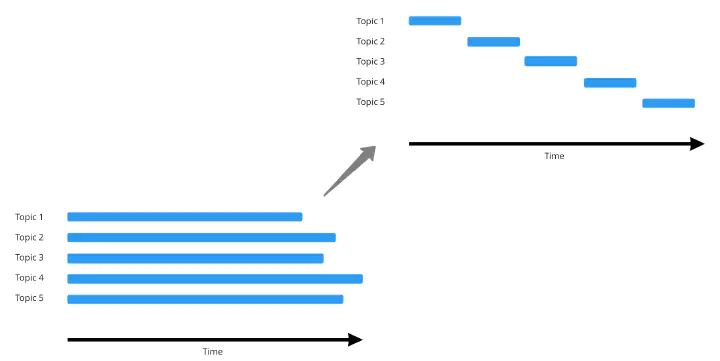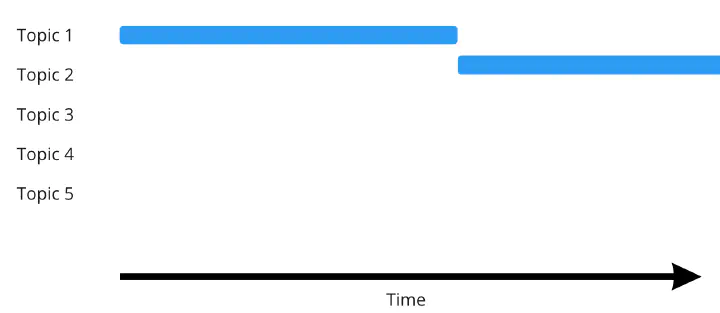A work in progress limit helps to keep focus and deliver the desired value to customers faster, instead of working on many things in parallel over a long period of time. Figure 1 illustrates the idea (see The Illusion of Progress - Non-Productive Busyness).
Figure 1: A WiP limit creates focus and leads to faster results.
But what if it doesn’t work that way? What if you focus on one topic, but it still drags on for a long time, as shown in Figure 2?
Figure 2: Despite focus, everything drags.
When cycle times don’t change despite having focus, it’s often because many parallel activities of the team previously masked problems and dependencies that now surfaced. An example: As long as a developer waits for an agreement with another team, she starts with the next story. This keeps the team busy, but leads to context switches and overhead. The problem of dependencies between teams persists and keeps slowing down the cycle times in the future.
This means, then: Less Work in Progress makes problems, dependencies and delays visible. In their book ‘The Toyota Way to Lean Leadership’ Jeffrey Liker and Gary L. Convis compare the Inventory (Work in Progress in our case) with the water level of a river. The higher the water level, the fewer rocks (problems / delays) are visible. In other words, a falling water level (less WiP) makes rocks (problems / delays) become visible.
In other words, if you set the WiP limit directly to the minimum, all the problems will immediately become visible and need to be cleared out of the way right away.
In order to avoid this, it is best to slowly approach a lower WiP limit:
- reduce work in progress slightly.
- look for rocks (problems)
- remove visible rocks or solve problems / dependencies until the flow is smooth again.
- repeat the whole process until a reasonable WiP level is reached.
Of course, the interesting question now is what types of problems exist and how they can be resolved. That’s a topic for another post 😊

